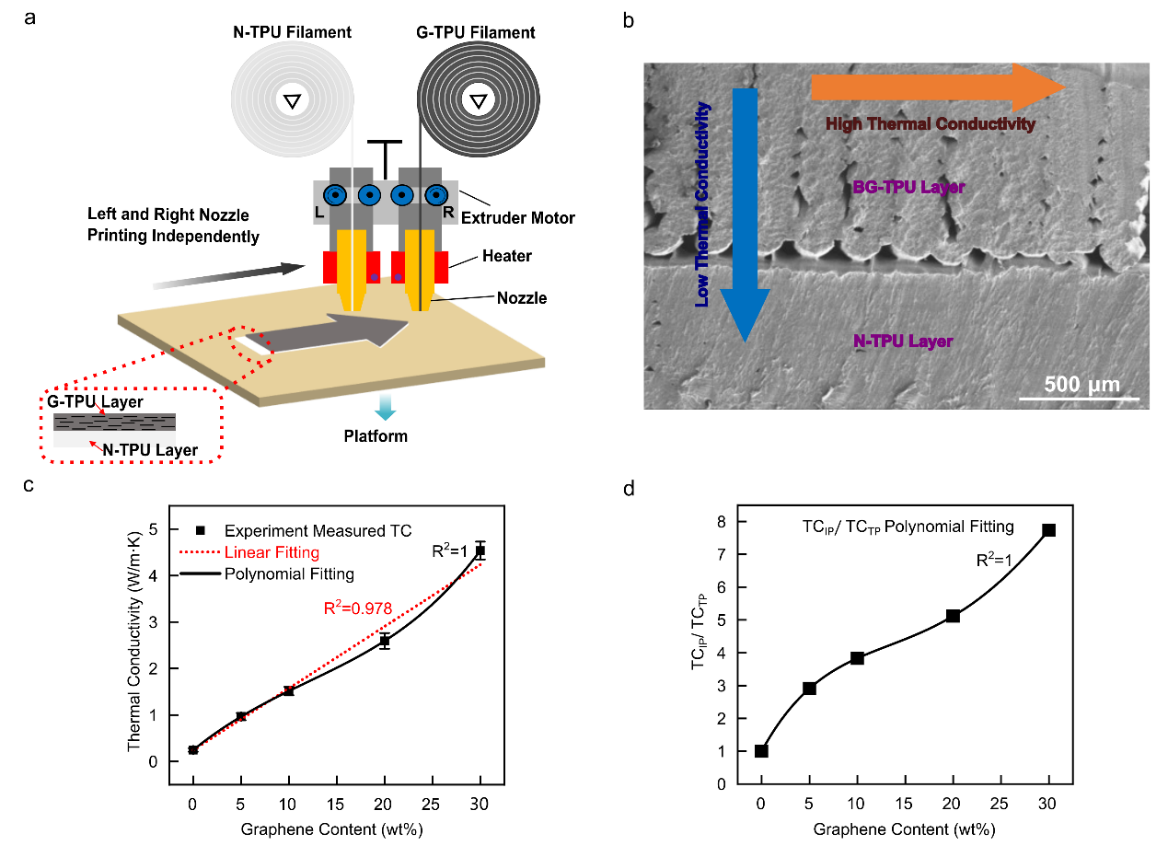
A research team led by Prof. WANG Zhenyang at the Institute of Solid State Physics, the Hefei Institutes of Physical Science of the Chinese Academy of Sciences, has developed a novel 3D-printed graphene/polymer double-layer composite with high anisotropic thermal conductivity, offering enhanced photothermal and electrothermal performance for advanced ice control applications.
The findings were published in Carbon and Chemical Engineering Journal.
Graphene is known for its outstanding thermal and electrical conductivity, particularly its strong anisotropy—high in-plane conductivity and much lower through-plane conductivity.
To utilize this property, the team designed a composite structure using dual-nozzle fused deposition modeling (FDM) 3D printing to directionally align graphene within a thermoplastic polyurethane (TPU) matrix. The resulting double-layer composite, consisting of graphene-enhanced TPU (G-TPU) and neat TPU (N-TPU), achieved an in-plane thermal conductivity of 4.54 W/(m·K), with an anisotropic ratio of about 8.
Further performance enhancement was achieved through laser-induced surface engineering. The laser treatment preserved graphene alignment, exposed the conductive network, and created a carbonized TPU layer, improving both thermal and electrical anisotropy. The anisotropic thermal conductivity ratio increased to 9.1, and the anisotropic electrical resistance ratio improved by over an order of magnitude. Additionally, the laser-treated surface exhibited improved hydrophobicity and light absorption, boosting photothermal conversion efficiency.
This work provides a scalable strategy for fabricating high-performance materials for anti-/de-icing systems, according to the team.

FDM 3D-printed G-TPU/N-TPU double-layer structure and its anisotropic thermal conductivity ratio. (Image by XI Min)